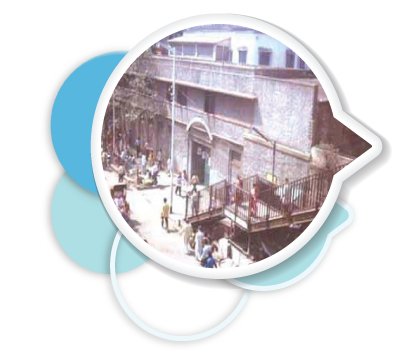 Loreto Day School Sealdah was inaugurated on August 1, 1857, under the principalship
of Sister Mary Catherine Cantopher. In 1902, the school relocated to its present
site donated by the Archbishop of Calcutta. Mother M. Martina Wilson and Sr. Evangelista
Considine being sent to Loreto Day School Sealdah, the sisters travelling to and
from Loreto House daily by ‘gharry’, a horse-drawn cab or carriage.
Loreto Day School Sealdah was inaugurated on August 1, 1857, under the principalship
of Sister Mary Catherine Cantopher. In 1902, the school relocated to its present
site donated by the Archbishop of Calcutta. Mother M. Martina Wilson and Sr. Evangelista
Considine being sent to Loreto Day School Sealdah, the sisters travelling to and
from Loreto House daily by ‘gharry’, a horse-drawn cab or carriage.
Over the years,
like a huge 3-D puzzle, Loreto Sealdah has had buildings repeatedly built, extended,
modified and removed. In 1927 a new section comprising a concert hall and large
second story classroom was erected. A ‘free’ school block, for the economically
deprived local population, was built inside the gate in 1932. A description of the
school from 1954 depicts how: “Two rather old-fashioned houses contain classrooms
which have something about them that tends to foster that ‘homely’ spirit – an informality
that is never indiscipline..”
Under the leadership of Mother Dorothy, some Loreto
schools began to challenge the code for Anglo-Indian schools whereby only a token
group of poorer Indian students would be admitted, saying, “I could not bear to
close the doors of our schools to Indian children in their own country” (Colmcille,
1968, p.281). Thus, the Loretos began to operate ‘free’ schools alongside their
regular schools. In time this saw 20 percent of all admissions being reserved for
the economically deprived.
Increasingly over the years, and particularly since the
arrival of S. M. Cyril in 1979, Loreto Day School Sealdah has undergone a procession
of structural alterations, all tailored to meet the perceived educational needs
of a growing school. Slowly the school’s scholastic reputation grew and as private
schools went, it was regarded as a good school with sound delivery on its academic
promises.